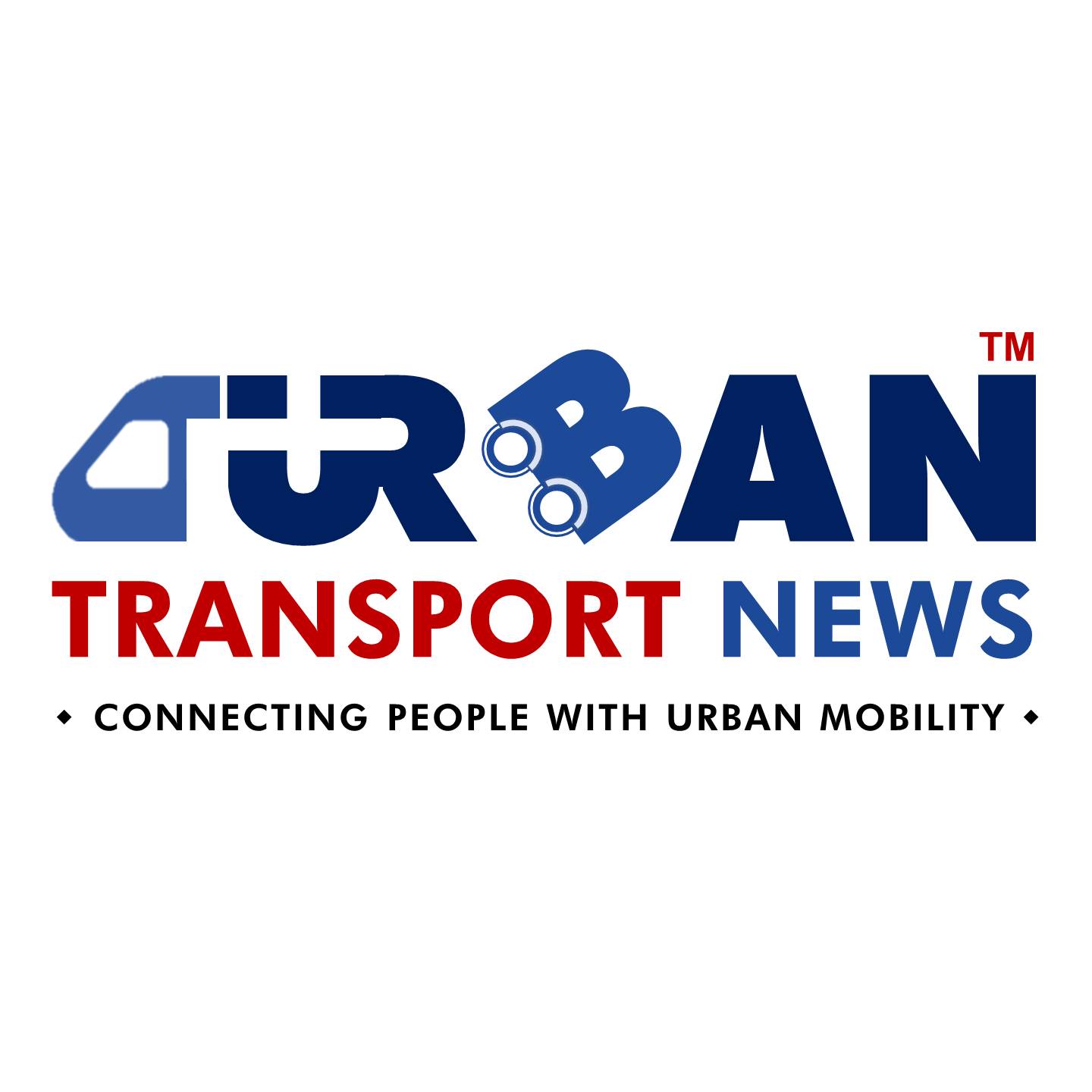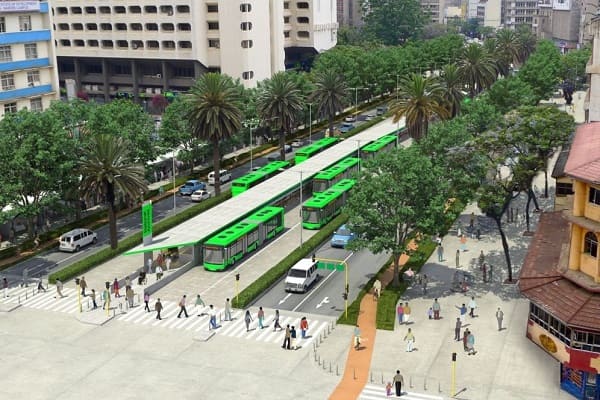 Delhi unveils ambitious Urban Mobility Vision: Luxury Metro Coaches, New Tunnels and Pod Taxi
Delhi unveils ambitious Urban Mobility Vision: Luxury Metro Coaches, New Tunnels and Pod Taxi Qatar approves Saudi Rail Link Agreement, Accelerating Gulf Railway Vision 2030
Qatar approves Saudi Rail Link Agreement, Accelerating Gulf Railway Vision 2030 UP Govt plans to introduce Water Metro services in Ayodhya, Varanasi & Prayagraj
UP Govt plans to introduce Water Metro services in Ayodhya, Varanasi & Prayagraj India’s First Urban Ropeway begins Trial Run in Varanasi, Set to carry 1 Lakh passengers daily
India’s First Urban Ropeway begins Trial Run in Varanasi, Set to carry 1 Lakh passengers daily India and Bhutan to Build First-Ever Rail Link: ₹4,033 Cr Project to Boost Regional Connectivity
India and Bhutan to Build First-Ever Rail Link: ₹4,033 Cr Project to Boost Regional Connectivity Patna to launch Eco-Friendly Water Metro; Trial Run soon between Digha and Kangan Ghats
Patna to launch Eco-Friendly Water Metro; Trial Run soon between Digha and Kangan Ghats Air India Group set to launch Flights Operations from Navi Mumbai International Airport
Air India Group set to launch Flights Operations from Navi Mumbai International Airport Chennai to launch 25-Year Mobility Plan with Unified QR Ticketing and One-App Transit System
Chennai to launch 25-Year Mobility Plan with Unified QR Ticketing and One-App Transit System Kochi Metro bags ₹4.4 crore contract to prepare DPR for Mumbai Water Metro Proejct
Kochi Metro bags ₹4.4 crore contract to prepare DPR for Mumbai Water Metro Proejct Navi Mumbai International Airport set for September launch; IndiGo and Akasa Air to lead Operations
Navi Mumbai International Airport set for September launch; IndiGo and Akasa Air to lead Operations
5G's Transformative Power: Making Roads 90 percent Safer with Autonomy

In a world where innovation blooms at an astonishing pace, certain technologies harbor a remarkable potential that may not be immediately apparent. Among these, 5G application in the mobility sector stands as a shining example. It can create safer, more efficient, and eco-friendly mobility solutions.
Just a few years ago, the idea of a world where algorithms replaced the steering wheel, where vehicles effortlessly communicated with one another, and where human errors no longer haunted our roads felt like a distant dream. Yet, this vision has become tangible in some corners of the world. It's merely a matter of time before this transformative shift expands its reach globally. The emergence of 5G technology accelerates this path towards seamless connectivity, mainly through game-changing solutions such as remote driving, road digitalization, and service continuity.
According to the World Economic Forum, 90% of accidents can be reduced by autonomous vehicles. This fresh perspective on road safety represents just one facet of the sweeping 5G transformation in mobility. Remote driving, powered by advanced driving assistance systems and interlinked vehicles, doesn't just promise safer roads; it also holds the potential to reduce traffic congestion drastically. Laura Sanz, CCAM Strategy Lead at i2CAT Foundation, astutely highlights, "Three key concepts will shape future mobility: safer mobility, more efficient mobility, and a digital ecosystem."
The digitalization of road infrastructure is another cornerstone of the 5G revolution. With sensors, cameras, and data-gathering devices integrated into our roads and highways, cities can optimize traffic flow, reduce pollution, and enhance overall road safety. Smart traffic planning, enabled by 5G, has the potential to create a seamless transportation network where vehicles move in harmony with one another, guided by real-time data.
In that sense, service continuity is a fundamental challenge, especially in a cross-border context. In the case of the railway, the need to address the high volume of data transmission requirements while delivering ultra-low latency and ultra-high reliability is crucial. To respond, the International Union of Railways (UIC) has been diligently developing the Future Railway Mobile Communication System (FRMCS) since 2014.
5G technology can revolutionise cross-border mobility by ushering in a new era of seamless, personalised entertainment experiences within vehicles. This innovation enables virtual media functions to seamlessly accompany passengers, providing an uninterrupted and customised entertainment journey. Beyond streaming favourite content, this advancement ensures the entertainment experience remains uninterrupted as moving across borders and regions. This transformation is poised to redefine how we experience entertainment while on the go, making cross-border mobility more engaging and enjoyable.
Amid the broader spectrum of the European Union's efforts to leverage the capabilities of 5G technology for various transformative purposes, several mobility projects have been financed. Their primary goal? To field-test and refine 5G-enabled Connected and Automated Mobility (CAM) solutions.
One particular venture within the European Union's framework is the 5GMED project. This initiative explores 5G-powered CAM applications in road and rail transport in the Mediterranean corridor between France and Spain, underpinned by sustainable business models, investment viability, and scalability. What makes 5GMED particularly intriguing is its comprehensive approach to addressing the four transformative cases explored in this article. Firstly, in the case of remote driving, 5GMED's infrastructure empowers automated driving systems to operate safely, even beyond their standard domains, through services like Minimum Risk Maneuver, Remote Assistance Requests, and Teleoperation Maneuvers. Secondly, in road infrastructure digitalization, 5GMED leverages 5G to facilitate intelligent traffic management, including emergency message relays, incident detection, and traffic flow regulation. In future railway mobile communications, 5GMED's architecture accommodates advanced sensor monitoring, obstacle detection, passenger safety, high-quality Wi-Fi, and multi-tenant mobile services for seamless cross-border train operations. Lastly, the "Follow-Me Infotainment" solution developed by 5GMED promises personalized media services, including Enjoy Media Together and Tour Planning, enabling a rich entertainment experience that travels with the user.
The project is currently in its conclusive phase, and earlier this year, in February 2023, the project executed a series of small-scale pilot demonstrations. The primary aim was to evaluate this technology's practicality and showcase the project's progress to a delegation from the European Commission. To underscore this project's potential impact and demonstrate how services can be seamlessly delivered across borders, 5GMED has scheduled demo days for October 2023.
The transformative power of 5G technology in mobility is nothing short of astounding. As we witness the convergence of innovation and connectivity, the world of transportation stands on the cusp of a revolution. From the promise of safer roads through remote driving to the digitalization of road infrastructure and the evolution of railway systems, 5G is reshaping how we move and connect.





